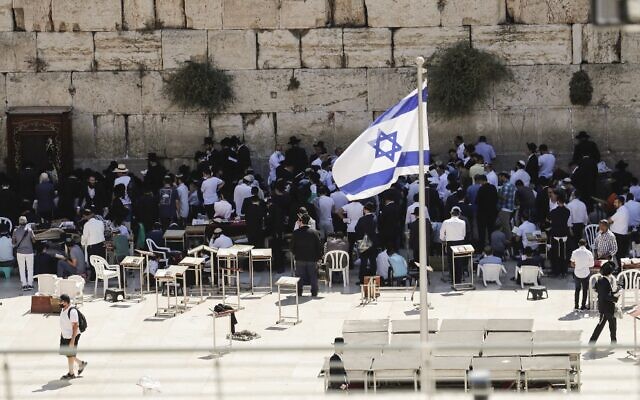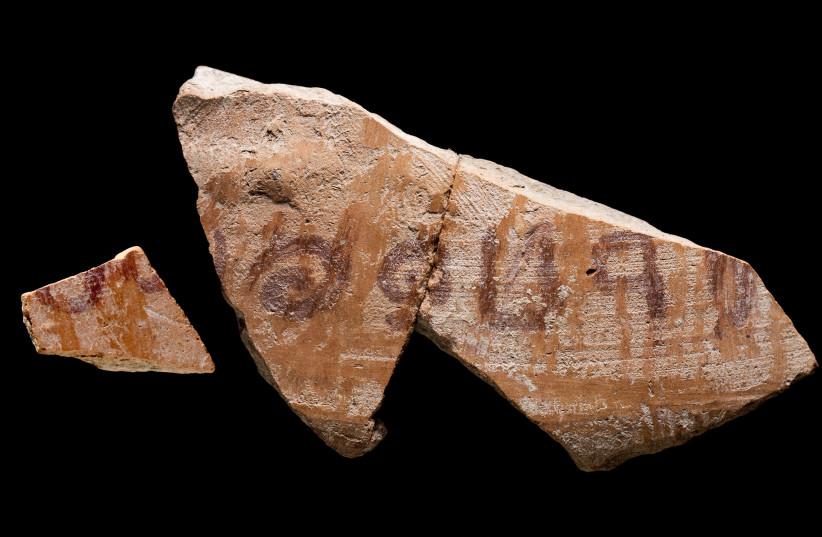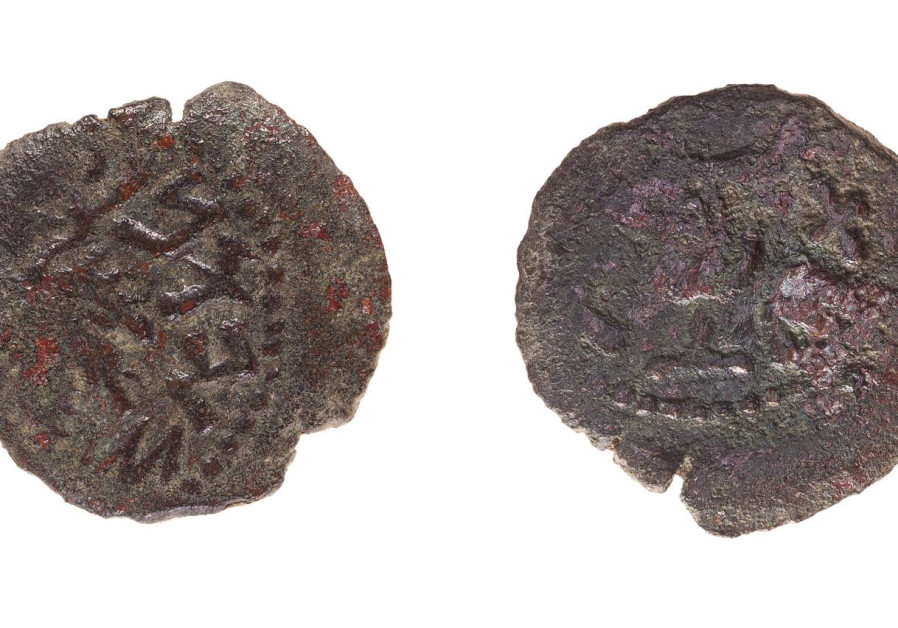Today it is Tisha B’Av, the 9th day of Av, the saddest day in the Jewish calendar. Today we remember the destruction of our two Holy Temples, both destroyed on this day, along with a host of other calamities.
As I wrote in a previous Tisha Be’Av post:
The fast commemorates the destruction of both the First and Second Temples in Jerusalem as well as a whole slew of tragic events that befell the Jewish people on that day:
These include the capture of Bethar, which marked the final defeat of Bar Kokhba‘s rebellion against the Romans, and the razing of Jerusalem by the Romans. The edict of King Edward I compelling the Jews of England to leave the country was signed on the ninth of Av in 1290, the Jews were expelled from Spain on that day in 1492, and World War I broke out in 1914. The sadness and mourning that Jews feel on this day are reflected in the various practices of Tisha B’Av, including abstaining from joyous activities like study of Torah, from eating and drinking, from sexual activity, and from wearing leather.
You can read a chronology of the major events leading up to the Churban (the destruction of the Temples and Jerusalem) at the link.
Since we are so far removed from the destruction of our Temples, it is extremely hard for a modern Jew to truly mourn the loss, even though that loss led to so many more tragedies and innumerable massacres and persecutions of the Jewish people throughout the centuries of the Diaspora. Especially today, living in the thriving independent State of Israel, mourning the loss of our sovereignty seems so hard when we are living in it today.
However, here is a story to bring this all into perspective, and to show us how we should really be mourning on Tisha B’Av:
We can also mourn the lack of our sovereignty in many parts of Eretz Yisrael, but particularly on Har Habayit, the Temple Mount, where our Temples once stood in all their glory but is now the site of the Al Aqsa Mosque. The Waqf, the Muslim trust that rules the site, would like to ban all Jewish worship from the site, but at last the Israeli government, first under Netanyahu and now under Naftali Bennet, is insisting that Jewish worshippers be allowed to ascend and maintain their freedom of worship.
However, it doesn’t usually work out quite as smoothly. Today over 1,000 Jewish worshippers were permitted to ascent to the Har Habayit, but not without clashes with the Muslims who were incited that “settlers are storming the Al Aqsa mosque” and other outrageous lies.
Dozens of Muslim worshipers barricaded themselves on the Temple Mount in the early hours of Sunday, ahead of the arrival of the Jewish visitors. Some of them briefly chanted: “With spirit, with blood, we’ll redeem Al-Aqsa.”
Israeli police entered the site and used sponge-tipped bullets and “crowd dispersal methods” to clear the area. Israel Police said that some Palestinians threw stones.
…
In Ramallah, Palestinian Authority President Mahmoud Abbas condemned what he deemed “the dangerous and ongoing Israeli escalation.”
“The Palestinian Presidency…considers this a grave threat to security and stability, and a provocation to the feelings of Palestinians, and holds the Israeli government responsible for this escalation,” Abbas’s office said in a statement.
The European Union’s mission to the Palestinians said it was “concerned over [the] ongoing tensions.”
“Israeli authorities, religious, and community leaders from all sides should act urgently to calm down this explosive situation,” the organization wrote in a tweet. [And they should butt out of our domestic affairs – Ed.]
Hamas, the Palestinian terror group that rules Gaza, mocked the “straying herds of settlers” ascending the Temple Mount.
“That the occupation is giving free rein to these straying herds of settlers does not reflect control or sovereignty, but rather is an attempt to cover up for impotence and deficiency,” Mohammad Hamadah, a Hamas spokesperson, said in a statement.
The Palestinian Islamic Jihad terror group called the clashes “terrorism and aggression that affects all Muslims in the world.”
Senior Palestinian Authority official Hussein al-Sheikh — one of PA President Mahmoud Abbas’s closest advisers — condemned Israeli police actions at the site.
“The storming of the Al-Aqsa Mosque is an Israeli political decision to establish facts on the ground, in defiance of the international community’s will, and bodes poorly for the orientation of the new government in Israel,” al-Sheikh tweeted.
“Storming settlers” aka Jewish worshippers on the Temple Mount on Tisha B’Av
Muslim clergy in East Jerusalem called on followers to come to the site, as this week marks the start of Eid al-Adha, one of the holiest festivals in the Islamic calendar. The holiday often sees mass congregational prayer on the Temple Mount. [ It should be noted that Hamas launched the last war with the pretext of Jews storming Al Aqsa].
Jewish men pray at the Western Wall in Jerusalem, during the annual Tisha B’Av fast day on July 18, 2021. (AHMAD GHARABLI / AFP)
And here we have the true reason for the Muslims’ hysteria about Jewish prayers on the Temple Mount – they fear they are losing control (about time too):
Sunday’s clashes came a day after a report said Israel has quietly started allowing Jewish prayers on the Temple Mount in recent months, in what would appear to be a major change to the status quo that has existed at the holy site since the Jewish state captured the Old City of Jerusalem from Jordan during 1967’s Six Day War.
Anxious to reduce friction with the Muslim world, and given that Orthodox sages generally counsel against ascending the Temple Mount for fear of treading on the sacred ground where the Temple’s Holy of Holies stood, Israel since 1967 has allowed the Jordanian Waqf to maintain religious authority atop the mount.
Jews have been allowed to visit under numerous restrictions, but not to pray.
A Channel 12 reporter, however, in recent days filmed prayers taking place at the site, as policemen — who in the past would eject any person suspected of prayer, and sometimes kicked people out for merely citing a biblical verse while speaking — passively looked on.
The report said that in addition to prayers, lengthy Torah lessons have been held on the Mount, again with the tacit approval of the police.
This is a definite improvement over past procedure but there is still a long way to go to ensure Jewish religious rites on our own holiest site.
But let’s move on to better news. Since we are now past midday, it is permissible to talk and think about more heartening and encouraging subjects. And recently there has been a slew of wonderful discoveries in Jerusalem and elsewhere in Israel:
A 3,000 year old inscription with the name of one of the Biblical judges was found near Kiryat Gat in southern Israel:
An inscription dating back some 3,100 years ago bearing the name of a biblical judge Jerubbaal was uncovered in the excavations at Khirbat er-Ra‘i, near Kiryat Gat in the Southern District of Israel, the Antiquities Authority (IAA) announced on Monday.
…
The writing, inked on a jug, marks the first time that the name Jerubbaal has been found outside the biblical text. It is believed that the owner penned his name on the jug.
The Jerubbaal inscription, written in ink on a pottery vessel. (photo credit: DAFNA GAZIT/ISRAEL ANTIQUITIES AUTHORITY)
“The name Jerubbaal is familiar from biblical tradition in the Book of Judges as an alternative name for the judge Gideon ben Yoash,” according to Prof. Yosef Garfinkel and archeologist Sa‘ar Ganor from the Hebrew University of Jerusalem.
Garfinkel and Ganor co-direct the excavations at the site with Dr. Kyle Keimer and Dr. Gil Davies from Macquarie University in Sydney, Australia – a partner in the dig together with the IAA.“Gideon is first mentioned as combating idolatry by breaking the altar to Baal and cutting down the Asherah pole,” they explained. “In biblical tradition, he is then remembered as triumphing over the Midianites, who used to cross over the Jordan to plunder agricultural crops. According to the Bible, Gideon organized a small army of 300 soldiers and attacked the Midianites by night near Ma‘ayan Harod.”
At around the same time we learned of the discovery of 2,000 year old “Freedom to Zion” coins from the time of the Bar Kochba revolt – the revolt which ended in the fall of Betar on Tisha B’Av and which is commemorated today:
Two coins dating back some 2,000 years were found in the Binyamin region of the West Bank during an archaeological survey conducted by Bar-Ilan University, the university and the Binyamin Regional Council announced Tuesday.The coins date back to the period of the Jewish revolts against the Romans.
The area is located in the northern part of the Judean Desert.
One coin was discovered near Wadi Rashash, and another in a location known as Hirbet J’bait.
The artifact found in Hirbet J’bait was minted around 67 CE. It features a vine leaf and the Hebrew inscription Herut Zion (Freedom for Zion) on one side, and a goblet and the inscription “Year Two” on the other. Just three years later, in 70 CE, the Romans would destroy the Temple in Jerusalem. Several other remains from that period, including a ritual bath, have been uncovered in the area.
…The second coin dates back to the time of the Bar Kochba Revolt some 70 years later. It bears a palm branch surrounded by a wreath and the inscription LeHerut Yerushalayim (Freedom to Jerusalem) on one side and a musical instrument and the name “Shimon” on the other – the first name of the rebellion’s leader Bar Kochba.
The revolt – also known as the Third Jewish Revolt – broke out over the religious restrictions imposed by the Romans, as well as their decision to build a Roman city over the ruins of Jewish Jerusalem, including a pagan sanctuary where the Temple had stood.
Most exciting of all though is the incredibly exciting discovery of First Temple era walls of Jerusalem, still unbreached!
In a potential contradiction to the biblical account of the 586 BCE destruction of Jerusalem, continuing excavations in Jerusalem’s City of David National Park have revealed a previously unseen section of the First Temple-period fortification wall that was breached — but apparently not entirely razed — by the Babylonians.
The exposed section of the First Temple-era protective wall on Jerusalem’s eastern perimeter. (Koby Harati/ City of David)
According to 2 Kings 25:10, “The entire Chaldean [Babylonian] force that was with the chief of the guard tore down the walls of Jerusalem on every side” (The Jewish Publication Society Tanakh). But this newly found extant section of the eastern city wall, connected to two previously excavated and documented sections, means that potentially the entire length of the eastern border was not in fact torn down by the conquering Babylonians.
With this discovery, archaeologists are now able to reconstruct the run of the wall that encircled the ancient Kingdom of Judah capital on the eve of its destruction, which is commemorated by the Jewish holiday of Tisha B’Av on Sunday.
The new eastern section connects with two other previously discovered adjacent wall sections found in the 1960s by British archaeologist Kathleen Kenyon and in the 1970s by archaeologist Yigal Shiloh. By connecting the dots on the map, there is now an almost continuous 200-meter (656-foot) fortified wall on the eastern slope of the City of David facing the Kidron Valley. This new section was uncovered during excavations in 2020.
…
The new find puts to rest an ongoing debate among archaeologists over whether the previously known wall sections were indeed used for fortification or instead as support walls for construction on the steep 30-degree slope on the eastern side of the city. Part of the reason archaeologists traditionally argued that these existing sections could not have been used for fortification is the fact that the biblical narrative relates that the fortification walls had been shattered by conquering soldiers. Presumably, then, the argument went, sections of wall found to be still standing must have served a different purpose.
But now, “with the current exposure of the section that almost physically connects between the two [previously known sections], it is clear that there’s a wall that’s running for hundreds of meters,” said Uziel. This lengthy wall section on the eastern slope, put together with previously known sections of Jerusalem fortification in other parts of the city such as the Jewish Quarter’s Broad Wall (45 meters/148 feet long, 23 meters/75 feet thick) means that it “only makes sense” that it was a fortification surrounding the city, said Uziel.
As always, these discoveries put paid to the lie that the Jews are an alien race in the Land of Israel. Every one of these treasures proves our millennia-old connection to Israel.
May this be the last Tisha B’Av that we have to fast. May we celebrate next year in rebuilt Jerusalem with the reconstruction of the Third Temple.
כל המתאבל על ירושלים זוכה ורואה בשמחתה
Those who mourn Jerusalem will merit to see her in her joy









What fantastic discoveries!Yet more proof that Jews are indigenous to Israel,that the Temples were here way long before any Palestinian was “created”.
As if we ever needed proof!Sadly it makes no difference to those in the alphabet letter UN “peace talks” forums.
As we saw today the Arabs will use any excuse to stop,stone,and scream at Jewish people(aka settlers!) going up to pray on the Temple Mount.And they have backing from all those international “peace groups”
May this be our last time that we mourn the loss of our holy Temples, may Hashem rebuild the Bet Hamikdash and forever Tisha brave will be transformed from a day of mourning to a day of joy.Amen
Amen! Well said.